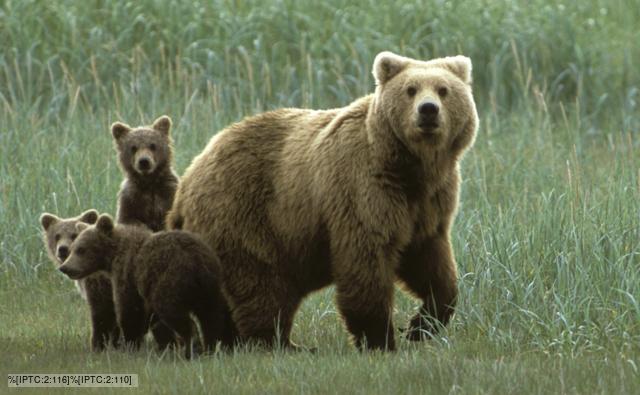 |
| The size of a certain population of bears depends on how much their habitat can provide them - food, water, shelter, etc - and the degree of predation for example . |
Biotic potential is the maximum reproductive capacity of a population if the resources are unlimited, therefore we can conclude that the biotic potential of organisms is limited by environmental restrictions. Normally, biotic potential is never reached.
Other factors that determine a species' biotic potential are:
- the number of offspring per reproductive cycle;
- The number of offspring that can survive long enough until they can reproduce;
- the age of reproductive maturity (female humans, for example, are restricted with the menopause);
- the life span of an individual.
Carrying Capacity
Carrying Capacity is the maximum size of a population that their habitat can support, providing food, water, shelter, and other necessities available in the environment. There are two types of factors that can affect the Carrying Capacity of a habitat: Density-dependent factors ( biotic factors, which its impact increases as the sized of the population increases; for example: diseases, predation, and infections) and Density-independent factors (abiotic factors that affects a population's size regardless of its density, for example: harsh weather, drought, food supplies and etc).
Graphs
Biologists use graphs to represent the growth of a population during a certain amount of time. This enable them to figure the biotic potential and carrying potential of a certain population.

Nenhum comentário:
Postar um comentário